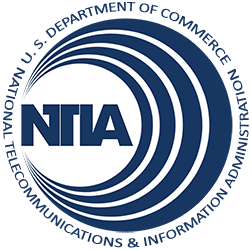Broadband’s ability to expand educational and employment opportunities is especially meaningful for Americans who are deaf or hard of hearing, a community that faces unique challenges in education and that suffers from a rate of unemployment much higher than the national average. Communication Service for the Deaf, Inc. (CSD) intends to expand broadband adoption among people who are deaf and hard of hearing and provide them with online tools to more fully participate in the digital economy. The project proposes to employ a combination of discounted broadband service and specialized computers, technology training from an online state-of-the art support center customized to the community’s needs, public access to videophones at anchor institutions from coast to coast, and a nationwide outreach initiative. Thousands will gain online access to all the Internet has to offer, including sign language interpreters, captioned video services, and other content and functionalities designed especially to advance their educational, employment, and healthcare interests.
Montana

| Grantee | Total Award | Type |
|---|---|---|
| Communication Service for the Deaf, Inc. | $14,988,657 | Sustainable Adoption |
| Montana Department of Commerce | $6,084,826 | Broadband Data & Development |
| Montana State Library | $1,829,473 | Public Computer Centers |
| Ronan Telephone Company | $13,796,640 | Infrastructure |
| University Corporation for Advanced Internet Development | $62,540,162 | Infrastructure |
Project Components
State Capacity Building:
The Montana Department of Commerce (MDOC) will use this funding to create a state broadband program, directing state-wide efforts to support broadband growth and adoption. The Montana Broadband Program will support a Broadband Task Force, which will place special emphasis on rural and tribal concerns. Funding will also support research and identification of the barriers to broadband availability and adoption.
Local Regional Technology Planning Teams:
MDOC will work in partnership with Montana’s Certified Regional Development Corporations (CRDCs) and Tribal Governments to support the development of regional broadband planning teams. With support from an MDOC employee and the local CRDC, each team will inventory local resources, identify areas for improvement, and provide specific technical assistance to create locally-owned state and federally supported technology plans.
Collection, Integration, and Validation:
This project was originally funded for broadband planning activities and two years of data collection. In September of 2010, this project was amended to extend data collection activities for an additional three years and to identify and implement best practices.
Address File Development:
Montana proposes to partner with 16 counties and 7 tribal governments to geocode current cadastral information in an efficient and cost-effective manner.
Third party research indicates that Montana’s adoption of broadband services lags behind the rest of the nation, a problem made more challenging by the state’s low population density and expansive geography. In many cases, public libraries are the only feasible source of broadband Internet access in remote communities. The Montana State Library proposes to provide more access at faster speeds to 42 local libraries in 29 counties across the state within reach of 86 percent of Montana’s population. Participating libraries were chosen based on demonstrated library need and geographic challenges, as well as their ability and willingness to sustain project investments.
Ronan Telephone Company is proposing a new high-speed middle-mile fiber network that would expand broadband services across an underserved region of Montana with high unemployment rates and a great need for improved Internet services. Ronan’s Montana West project proposes to expand broadband and high-speed wireless services to the Blackfeet and the Confederated Salish and Kootenai Native American Tribes, while improving access options in the underserved communities of St. Mary, Babb, Santa Rita, Heart Butte, Elmo, Big Arm, and Evaro, Montana. The project plans to make the economic development and recovery of these communities a chief focus of its operations by linking residents to skills training and distance learning. This investment would also improve existing bandwidth and connectivity to the Blackfeet Reservation community of East Glacier Park.
As part of a longstanding project to connect essential community anchor institutions across the country, and facilitate closer collaboration and long-term benefits for education, research, healthcare, public safety, and government services, the University Corporation for Advanced Internet Development (UCAID) proposes a comprehensive 50-state network benefitting approximately 121,000 community anchors. The project proposes a large-scale, public-private partnership to interconnect more than 30 existing research and education networks, creating a dedicated 100-200 Gbps nationwide fiber backbone with 3.2 terabits per second (TBps) total capacity that would enable advanced networking features such as IPv6 and video multicasting. The project plans to connect community anchors across all disciplines into virtual communities with shared goals and objectives, including colleges, universities, libraries, major veterans and other health care facilities, and public safety entities, with additional benefits to tribes, vulnerable populations, and government entities.
